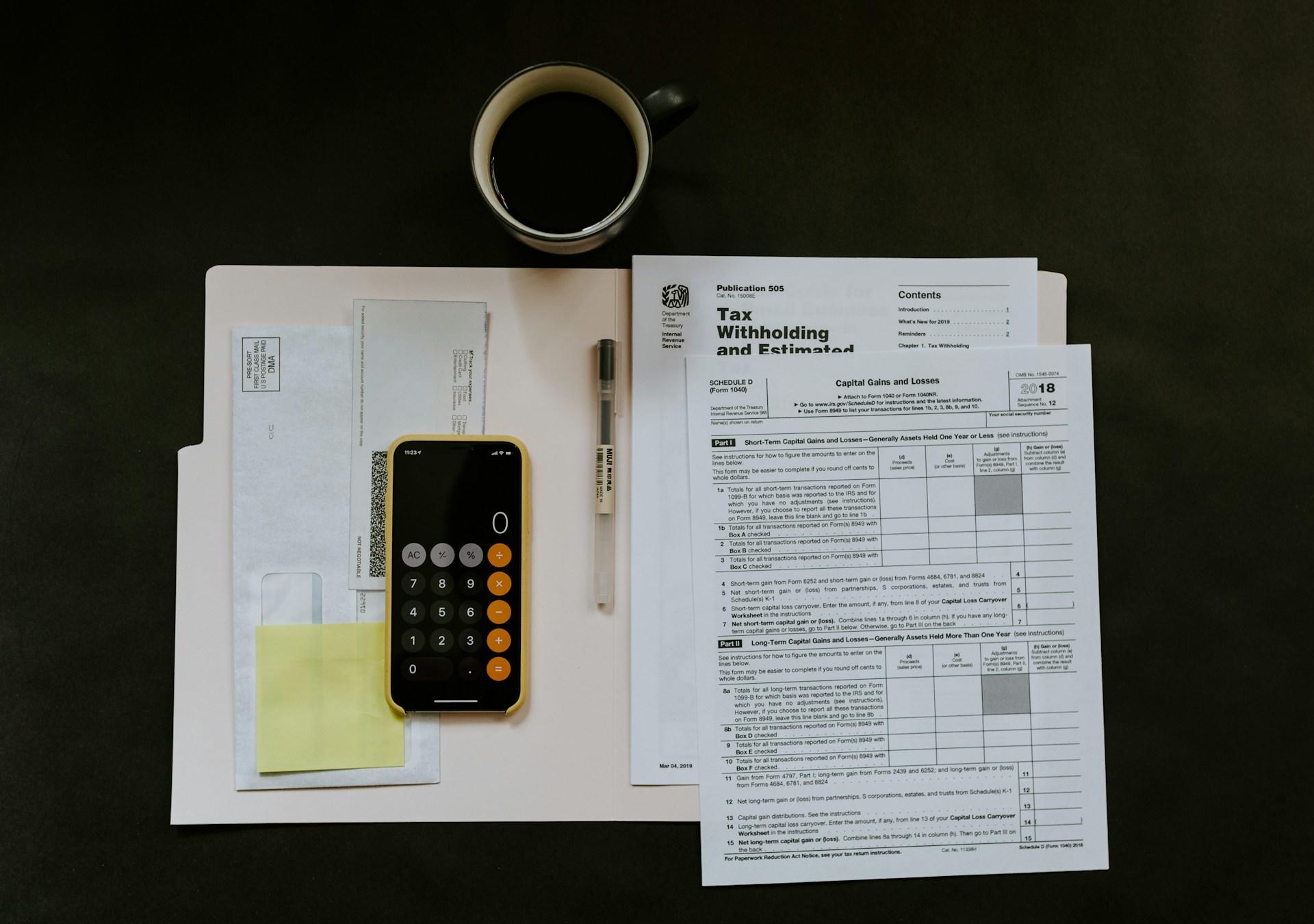Accounting has always been known as a subject studied and practised by the acutely intellectual, as such, it comes with more than its fair share of intriguing, but often times confusing terminology and ‘jargon’ that may be challenging for ESOL learners to grasp.
You could be the best accountant in the world, but if you are unable to effectively communicated with the rest of the accounting community, which includes, but is not limited to, colleagues, academics, clients and management, then you won’t be able to put any of your talent to use in a practical way.
This might sound like a daunting prospect, but don’t worry. In this article, we’ll be having a look at some of the key accounting terms and essential business English vocabulary, so that you can begin to navigate the world of professional accounting like a pro!


Essential Accounting Vocabulary for Beginners
To start with, let’s make sure we truly understand what it is we mean when we say ‘Accountant’.
To some people, this term might just mean someone who’s good with numbers, or in television drama, an accountant is often portrayed as someone who waves their hand and makes financial troubles disappear.
In reality, an accountant is someone who is very skilled at recording/documenting financial transactions in all their forms, but additionally they are also necessarily skilled at communicating this information concisely to the clients they work for.
Being an accountant is a position of trust and responsibility, as one is required to maintain the utmost level of detail and accuracy in their reports and clarity in their communication. This is all the more reason that understanding the terminology in the profession is so important.
Assets, Liabilities, and Equity
The work of an accountant is often spent focusing on two key kinds of wealth… Assets and Liabilities. Whether the client is a company or a person, in simple terms, the assets are the entities, goods, or services that a company owns that can provide an increase in equity.
Whereas Liabilities are what is owed by the client to other parties and creates a decrease in equity.
The equity itself is essentially the value of, in the case of a company, all the shares, or in the case of an individual person, their own wealth. For simplicity, an individual can be thought of as owning the one and only share of their own company, this is often referred to as someone’s ‘net worth’.
Table summarising the difference between assets, liabilities and equities:
| Assets | Liabilities | Equity | |
|---|---|---|---|
| Definition | Resources owned with value | Obligations or debts owed to others | The residual interest in the assets of the entity after deducting liabilities |
| Examples | Cash, investments, real estate | Loans, mortgages, credit card debt | Owner's investment in the business, retained earnings |
| Impact | Increase net worth | Decrease net worth | Can increase or decrease depending on changes in assets and liabilities |
| Ownership | Owned by individual or entity | Owed by individual or entity | Owner's or shareholders' claim on the assets |
| Role in Finances | Contribute to wealth accumulation | Require repayment or settlement | Represents the net value of assets once liabilities are settled |
Revenue and Expenses
Another couple of terms that you will certainly see in accounting is revenue and expenses. This language could be considered commonplace, since we often use it outside of accounting contexts, but knowing a complete and professional definition of the words is still worthwhile.
Revenue represents the total amount of money coming in via the sale of goods or services. This isn’t the same as the profit or net income of a company or person, because it has yet to be valued against the expenses.
Expenses can be thought of as the opposite of the revenue, it's everything that a company or person spends in the interest of creating the revenue. Therefore, the net income is determined by subtracting the expenses from the revenue over the same time period.
| Revenues | Expenses | |
|---|---|---|
| Definition | Income generated from business activities | Costs incurred to operate the business |
| Source | Sales, services rendered, interest, royalties | Salaries, rent, utilities, supplies |
| Impact | Increase net income | Decrease net income |
| Nature | Positive effect on financial health | Negative effect on financial health |
| Management | Increase through sales, marketing efforts | Control through budgeting, cost-cutting measures |
| Objective | Maximize to enhance profitability | Minimize to improve profitability |
Debits and Credits
Debits and credits can be a tricky pair of concepts to wrap one's head around. In essence, they represent the flow of economic benefit in a transaction from a source, to its destination.
Debits represent the inflow of economic benefit to a destination i.e. an account. Which means that in an account of transactions, they are the positive side of each transaction and represent an increase in assets and a decrease in liabilities.
This can be confusing because outside of accounting contexts, we tend to think of transactions as simply money in and money out, but in the case of debits and credits, a purchase (money out) is in fact a debit, because a liability is being exchanged for an asset.
Credits instead represent the outflow of economic benefit from a source. Thus, they are the negative side of a balance sheet. You can try to understand credits by thinking of what happens when you use a credit card. Money is credited to the user’s account, but it’s a liability, because it is money owed.
If you’re still confused, check out this helpful video which breaks down the details of debits and credits as simply as possible.
What are the 3 Basic Rules of Accounting?
In accounting there are 3 basic rules that are the guiding principles for recording all financial transactions. They can be summarised as the following:
- The Accounting Equation: This rule states that assets equal liabilities plus equity. In other words, all the resources owned by a business (assets) are financed by either debts owed to creditors (liabilities) or investments made by the owners (equity).
- The Revenue Recognition Principle: According to this rule, revenue should be recognised when it is earned, regardless of when the cash is actually received. This means that revenue is recorded in the accounting records when the goods are delivered or the services are performed, and not necessarily when the payment is received.
- The Matching Principle: This principle requires that expenses be matched with the revenues they help generate. In other words, expenses should be recorded in the same period as the revenues they relate to, regardless of when the payment is made. This ensures that the financial statements accurately reflect the costs associated with earning the revenues.
Understanding Financial Reports and Terminology
Next up we have some vocabulary and words specific to the work of an accountant, these terms are broadly used by accountants to communicate the results of their work and to show clients and other accountants relevant information.
Balance Sheet
A balance sheet is a common form of documentation that accountants use to communicate the current financial situation of a person or company.
It’s called a balance sheet because it balances the debits and credits that we explained earlier to represent the company's overall equity in terms of its assets and liabilities at a given point in time.
Balance sheets are great for providing a short term insight into the financial status of an organisation, but often don’t take into account more abstract things like opportunities and threats that might exist in the future, since it can only account for existing or pending transactions and assets or liabilities that are currently owned.
Income Statement
Similar to a balance sheet, an income statement is a way of measuring the financial situation of a person or company. The key difference with an income statement is that it doesn’t deal directly with the total equity of the subject, but rather the cash flow over a given period.
This basically means that an income statement records the revenue, expenses and therefore net income over a specific time period.
In the most simple terms, this is a record of how much money was made or lost over a certain time.

Profit and Loss Statement
The 'profit and less statement' is the same thing as an income statement, but is preferred by some accountants because it is a more technically comprehensive term for what such a statement shows.
Essentially, a profit and loss statement, or an income statement is a financial report that shows how much money a business has made over a certain period. It lists all the money a business earns from selling goods or services (revenues) and subtracts all the costs and expenses incurred (e.g. rent, salaries, and supplies). The result is either a profit (when revenues exceed expenses) or a loss (when expenses exceed revenues).
Profit: Revenues > Expenses
Loss: Revenues < Expenses
It is important for new accountants to know that as they go from employer to employer or client to client, they might encounter different terminology which refers to the same concept.
This is a further reason to put a strong effort into learning and remembering as many terms as possible, to avoid any confusion and miscommunications that might arise in the workplace.
Ledger
‘Ledger’ is a classic term in accounting, but with the advent of modern technologies, the term might actually refer to a few different things. In its most traditional sense, the Ledger is a real physical document or collection of documents that is used to manually record transactions.
The concept of the ledger would vastly change as it became digitised. While a Ledger was previously a physical entity, these days a digital ledger is actually a piece of accounting software, examples of such software are Xero, Quickbooks, and Sage.
These software offer countless advantages over traditional books, such as real time updates, remote access, analysis tools, automation of accounting tasks and superior communication options between accountants and their co-workers or clients.
Inventory
In accounting the inventory refers to a list of a type of asset which can be one of three kinds of material objects. Inventoried assets are physical property which a person or company owns and they can be used to create economic benefit.
| Raw Materials | Work in Progress | Finished Goods |
|---|---|---|
| Raw materials are goods extracted by primary economic activity, such as logging, mining, farming etc. It includes things such as metals, oil, organic produce, which don’t have inherent value to a consumer until they are processed into products. | Goods at this stage are in limbo since they take on the risks associated with manufacturing. This is because unfinished products have received investment, but until finished are worth even less than the raw materials because they can’t be sold to customers. This is why tracking these items in the inventory is particularly important in accounting. | These are the goods which are ready to be distributed to customers. These products no longer have the risks of manufacturing associated with them, but instead represent a financial risk if they aren’t able to be sold for a profit. It is a company’s priority to sell these items quickly to achieve a profitable ‘inventory turnover’. |
Understanding this process is key to having a comprehensive view of how a business operates and achieves profitability using their investments and resources.

Afterword
Thank you for reading our article on business English accounting terminology. We hope you were able to learn something new that could help you develop your communication as a manager.
Now that you've seen the basics of accounting terminology, you may want to expand your business English skills by learning more about human resources vocabulary.
While you’re at it, why not check out Superprof’s premier service which is designed to help you get in touch with expert tutors with never seen before ease and efficiency. Have a look and see how easy it is to expedite your learning progress!















Thanks for the article!
This vocabulary was helpful.
Thank you, really glad that you found it helpful!